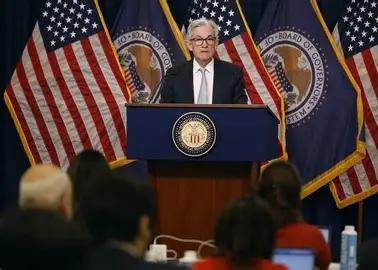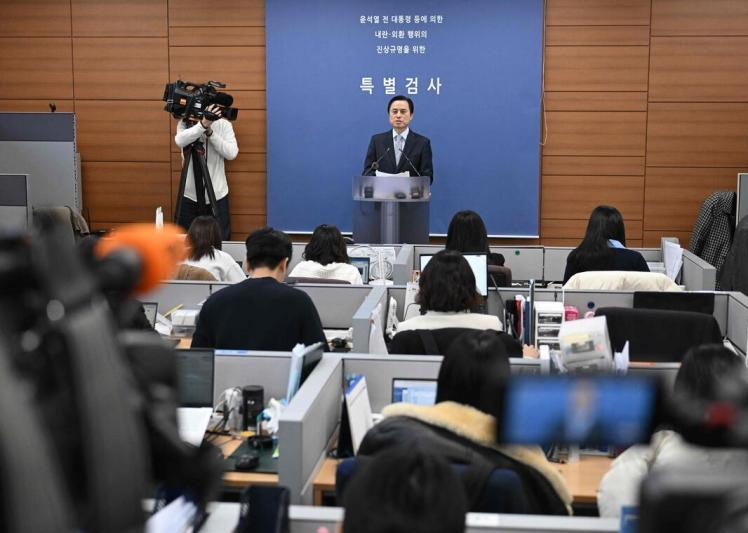
Federal Reserve Chair Powell delivered a keynote speech at the Jackson Hole Global Central Bank Symposium, sending out a dovish signal for the first time. He believes that in the short term, the downside risk to employment is greater than the upside risk to inflation, providing forward guidance for the Fed's shift in monetary policy. Powell's speech directly boosted market expectations of a rate cut. Traders expect the probability of the Federal Reserve cutting interest rates in September to rise from 75% to about 90%. U.S. stocks rose in response, with the Dow Jones Industrial Average hitting a record high and the U.S. dollar index falling. Global market risk appetite has significantly rebounded.
Dovish signal: Powell made it clear
This year's Jackson Hole Annual meeting has drawn much attention as it may determine the global capital flow in the second half of 2025. Powell conveyed three key messages in his speech. He expressed concerns about the labor market, believing that the balance achieved by the slowdown in supply and demand is unsustainable and that employment is at risk of a sharp deterioration. Regarding inflation, Powell believes that the inflation push by tariffs is "one-off" and is unlikely to trigger a wage-inflation spiral or an inflation expectation-real inflation spiral. Most importantly, Powell made it clear that "the downside risks to employment outweigh the upside risks to inflation", marking the first time since 2025 that he has sent out a dovish signal.
Policy shift: The transition from hawkish to dovish
Powell's speech this time stands in sharp contrast to his hawkish stance at the July FOMC meeting. He was ambiguous about interest rate cuts at that time, but now he has clearly shifted to a neutral and dovish stance. Analysis suggests that the significant downward revision of the US non-farm payroll data in May and June was the key factor that prompted Powell to change his attitude. These data indicate that the weakening of the labor market has exceeded expectations.
Powell hinted in his speech: "In the context of policy being in a restrictive zone, a shift in the baseline outlook and risk balance may require us to adjust our policy stance." This is regarded as a forward guidance for the interest rate cut in September.
Interest rate cut expectations: Action in September is almost certain
After Powell's speech, market expectations for interest rate cuts rose sharply. The expectation of a rate cut in September implied by federal funds rate futures rose from 72% to 94% at one point. Several Wall Street institutions have revised their forecasts, expecting two interest rate cuts before the end of the year, with a total reduction of half a percentage point. The current federal funds rate is 4.25% to 4.50%. Guotai Haitong Securities predicts: "A 25 basis point interest rate cut is expected in September. There will be at most two interest rate cuts within the year, with a total increase of around 50 basis points. The possibility of consecutive significant interest rate cuts is not high."
Key data: Two hurdles before the September interest rate cut Despite high market expectations, whether the September interest rate cut can truly be realized still depends on two key data points.
The first is the non-farm payroll report released on September 5th, and the second is the inflation data released on September 11th. These data will provide a basis for the final decision of the Federal Reserve. Analysis suggests that if job growth slows to below 50,000 per month in August and the unemployment rate rises, it could prompt the Federal Reserve to cut interest rates by 50 basis points. Conversely, if the unemployment rate drops to 4.0%-4.1% and the monthly core inflation rate is at least 0.4%, it may provide a basis for not taking action in September.
Market impact: Global asset price revaluation
After Powell's speech, the market responded promptly and clearly. U.S. stocks rose sharply, with the Dow Jones Industrial Average hitting a record high. Us Treasury yields declined, the US dollar weakened, and the price of gold closed higher. Risky assets have generally been boosted. However, analysts caution against the "expectation gap" in 2026. Inflation is likely to remain sticky in the first half of 2026, the economy will stabilize and recover, and the unemployment rate will decline.
Market attention is now focused on the non-farm payroll report to be released on September 5th and the inflation data to be released on September 11th. These two sets of data will serve as the key basis for the Federal Reserve's decision at its September interest rate meeting. If the data supports a rate cut, the Federal Reserve is likely to announce a 25 basis point rate cut at the September 17-18 meeting, which will be the first rate cut in 2025.
However, the path ahead is not smooth. Powell emphasized that the impact of tariffs on inflation is still ongoing, and "don't expect interest rates to fall rapidly."

YTN TV of South Korea reported on Tuesday (December 16) that the South Korean court plans to make a ruling on the charges of former President Yoon Suk Yeol for obstructing justice on January 16, 2026.
YTN TV of South Korea reported on Tuesday (December 16) tha…
On December 7, a new round of intense military conflict bro…
Recently, US media disclosed that the Pentagon is planning …
From three launch failures and a brush with bankruptcy to n…
Recently, a major piece of news has emerged in the US polit…
Against the backdrop of the Federal Reserve's third rate cu…